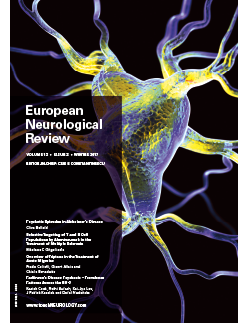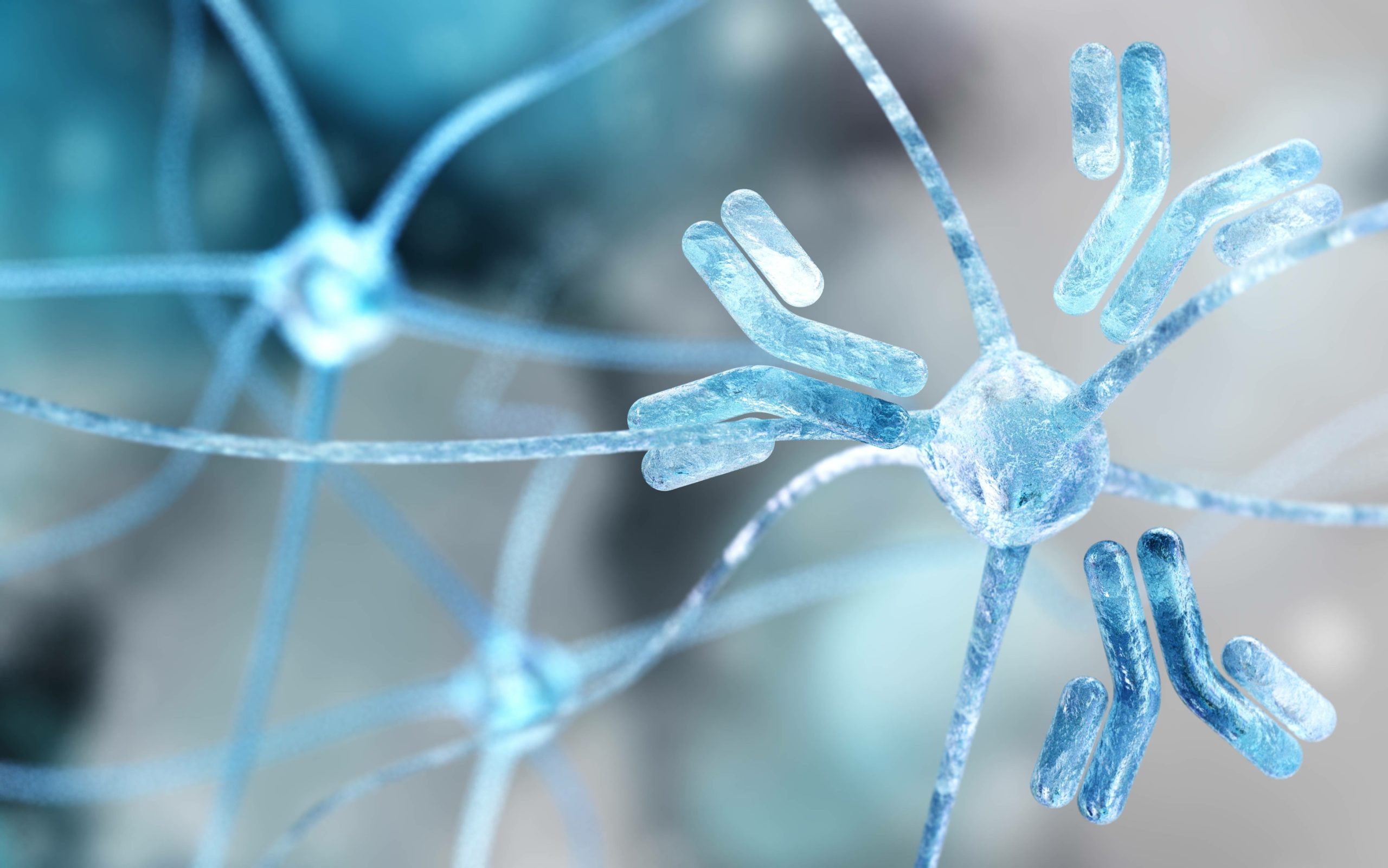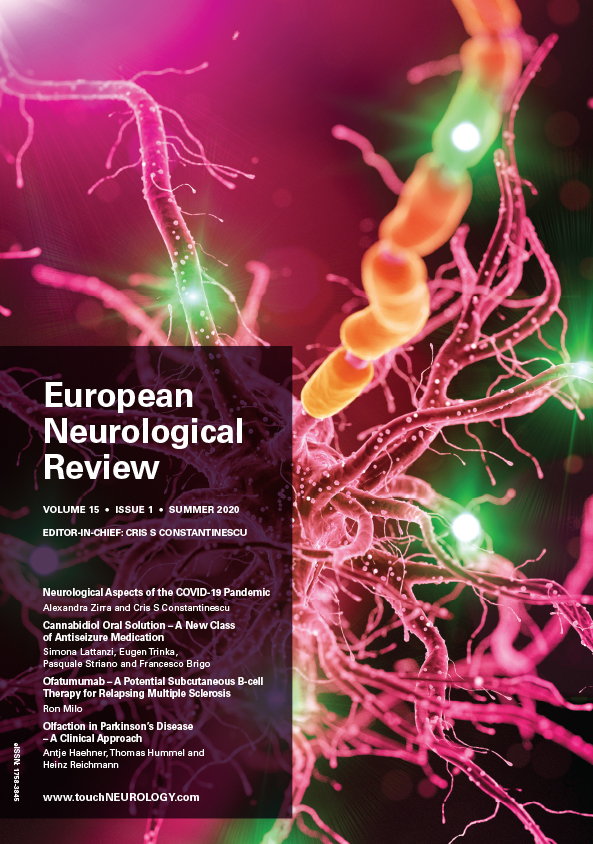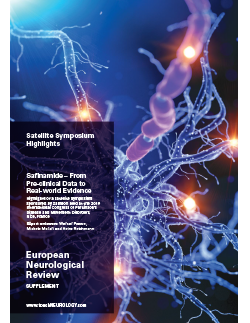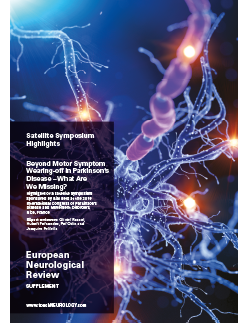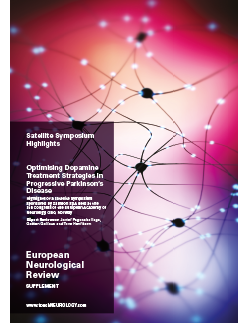EUROPEAN NEUROLOGICAL REVIEW – VOLUME 12 ISSUE 2 – WINTER 2017
Welcome to the winter edition of European Neurological Review! This issue includes a ‘2018 Call for Submissions’ from our Editor-in-Chief, Cris Constantinescu, and is introduced by one of the newest additions to our European editorial board, Murat Emre. The issue covers a variety of topics including psychosis in Alzheimer’s and Parkinson’s disease, migraine, multiple sclerosis and Pick complex diseases.
We hope you will enjoy the compilation of expert-authored, peer-reviewed articles, as well as a selection of insightful expert interviews. Thanks to all the authors who contributed their expertise to this edition, as well the members of our editorial board for their ongoing support and guidance.
We are currently accepting submissions for our 2018 editions and welcome enquiries through our submission site
Letter from the Editor-in-Chief
Dear Colleagues, European Neurological Review invites colleagues in the neurology community to contribute articles for the 2018 summer and winter editions. European Neurological Review aims to provide practicing physicians and related healthcare professionals in the field of neurology with concise and timely articles that provide practical advice and help them in their day-to-day clinical setting. […]
Foreword
Welcome to the latest edition of European Neurological Review. This issue features a number of topical articles that have been chosen for their assessment of current practices and research that directly affect neurologists and other practitioners involved in the care of patients with neurological illness. The number of people with dementia is steadily increasing and […]
Expert Interviews
Psychotic episodes, particularly delusions, hallucinations, agitation, apathy, depression and sleep disturbance are characteristic and harmful effects of Alzheimer’s disease (AD); they are often the first manifestion of the condition and frequently appear before dementia begins. Despite their importance, they are frequently unrecognised and are difficult to treat. There is currently much interest in the mechanisms […]
Shortly after the 18th Congress of the International Headache Society in Vancouver, Canada, in September 2017, Uwe Reuter participated in an expert interview. Here, he shares his insights and perspective on preventative therapies for migraine, discontinuation rates on current therapies, the need for new therapies with alternate targets and most promising potential therapies currently in […]
Results from a prospective, open-label, head-to-head clinical trial in chronic migraine were presented for the first time at the 18th Congress of the International Headache Society in Vancouver, Canada in September 2017. In an expert interview, lead study investigator John F Rothrock discusses preventative therapies for migraine, the need for new therapies and the clinical […]
In recent years, a number of novel disease-modifying therapies have been approved for the treatment of patients with multiple sclerosis (MS). Cladribine tablets (MavencladTM, Merck), a purine nucleoside analogue, has been used for the treatment of several neoplasms1 and, in the last 15 years, has been developed for the treatment of MS. The clinical development […]
Editorial
I am delighted to introduce a new report from Alzheimer Europe highlighting the existing inequalities in access to dementia care and treatment across Europe. The report, ‘European Dementia Monitor 2017: comparing and benchmarking national dementia strategies and policies’, assesses which countries provide the most dementia-friendly policies and guarantee the best support and treatment of people […]
Reviews
Migraine is one of the most common headache disorders causing substantial disability for affected patients and has a considerable societal cost owing to the high prevalence in the general population.1 Results from the Global Burden of Diseases, Injuries, and Risk Factors Study 2015 for all-cause mortality, cause-specific mortality and non-fatal disease burden were used to […]
T and B cells in multiple sclerosis immunopathology Knowledge of multiple sclerosis (MS) pathophysiology has progressed dramatically from the first description of the disease in 1868 to the understanding of immune processes in the 1990s to the present day. Genetic1,2 and environmental3 factors contribute to MS and cause an imbalance in immune regulatory networks comprising […]
Original Research
Pick complex refers to a spectrum of diseases with a variety of overlapping and pathological features. Although not ubiquitous, the presence of tau inclusions is a common feature in Pick complexes.1 The main neuropathological phenotypes comprise tau-frontotemporal lobar degeneration (tau-FTLD), progressive supranuclear palsy (PSP) and corticobasal degeneration (CBD).2 Although PSP and CBD were previously described […]
Parkinson’s disease (PD) is a chronic, progressive, neurological disorder; diagnosis is based on its hallmark motor symptoms which include resting tremor, bradykinesia, rigidity and postural instability.1–3 It is the second most common neurodegenerative disease after Alzheimer’s disease, affecting over 1 million individuals across Europe and more than 10 million worldwide.3,4 Parkinson’s disease psychosis (PDP) is […]
Parkinson’s disease psychosis (PDP) is a common neuropsychiatric condition that manifests in patients following a primary diagnosis of Parkinson’s disease (PD). Over half of patients diagnosed with PD experience PDP during the course of their disease.1,2 Diagnostic criteria for PDP have been developed by the US-based National Institute of Neurological Disorders and Stroke (NINDS)/National Institute […]
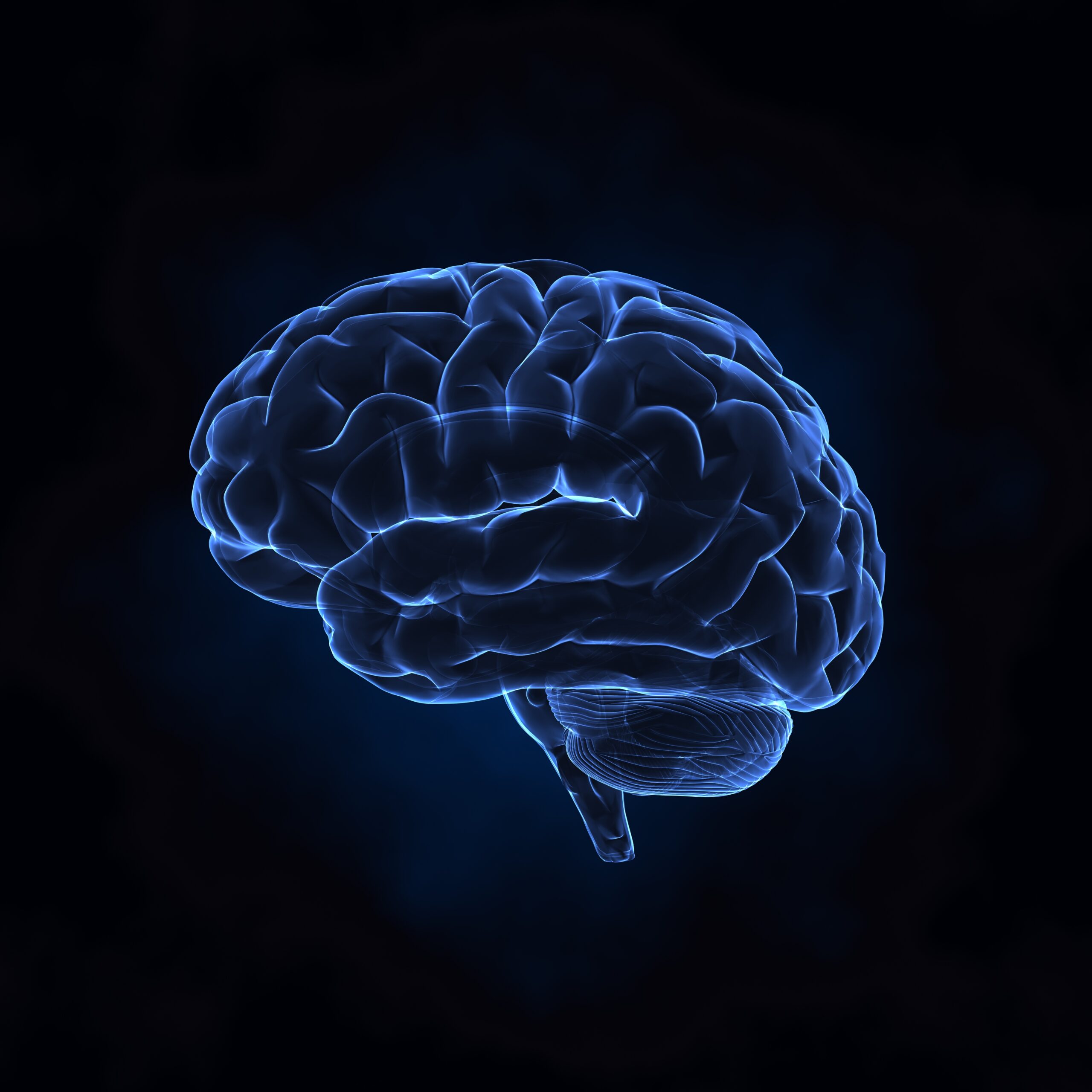
Trending Topic
Parkinson’s disease (PD) is a complex neurodegenerative condition that predominantly affects older people, with a rising prevalence worldwide.1,2 There are many on-going challenges and unmet needs in PD: difficulties in making an accurate diagnosis (particularly in the early stages of the disease), troubling side effects associated with the available pharmacological treatments, a lack of effective disease-modifying therapies […]
Journal Archive
European Neurological Review is a peer-reviewed, free-to-access, bi-annual neurology journal comprising review articles, case reports, practice guides, theoretical discussions, and original research. It features balanced and comprehensive articles written by leading authorities, addressing the most important and salient developments in the field of neurology in practical terms.
Latest articles videos and clinical updates - straight to your inbox
Log into your Touch Account
Earn and track your CME credits on the go, save articles for later, and follow the latest congress coverage.
Register now for FREE Access
Register for free to hear about the latest expert-led education, peer-reviewed articles, conference highlights, and innovative CME activities.
Sign up with an Email
Or use a Social Account.
This Functionality is for
Members Only
Explore the latest in medical education and stay current in your field. Create a free account to track your learning.


